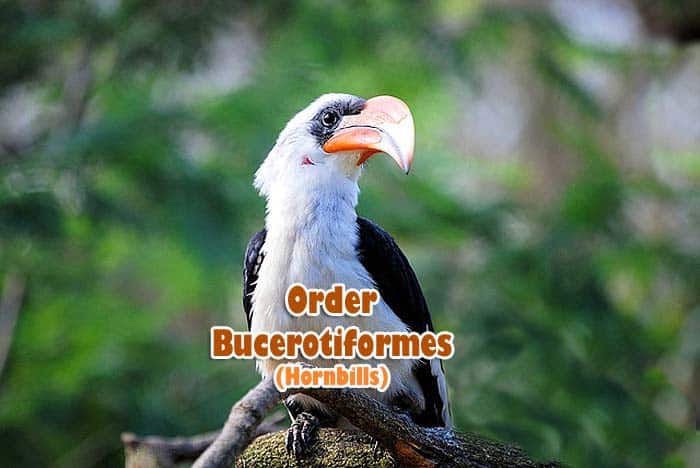
Previously the birds of this order belonged to order Coraciiformes; however, now they are classified into the separate order of their own. This bird order contains hornbills, hoopoes, and woodhoopoes.
Table of Contents
According to the ITIS database, there are 4 families in this order, namely Bucerotidae (Hornbills), Bucorvidae (Ground Hornbills), Phoeniculidae (Wood Hoopoes), and Upupidae (Hoopoes). There are 63 bird species in the Bucerotiformes order.
Bucerotiformes Characteristics
Here are some exciting and crucial facts about them:
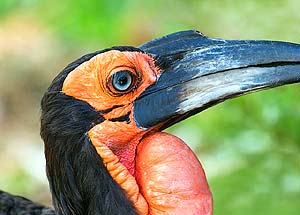 These birds can be found in Africa to Asia and Papua New Guinea.
These birds can be found in Africa to Asia and Papua New Guinea.- The most prominent feature of the birds in this order is the presence of large, hard bills.
- Some birds, in this order – hornbills in particular – have prominent casques over the bills.
- The plumage of these birds is varied: from black and brown to white and cream.
- The birds have bare parts on the hands and legs which are usually brightly colored.
- The presence of the casque is unique to the hornbill family.
- The casque of hornbills develops with time and is hollow inside. The casque serves as a resonating chamber that helps with specific sounds that giant hornbills produce.
- Males are usually bigger than females. The casques and bills are also more prominent in males compared to females and are instruments of competition during the mating season.
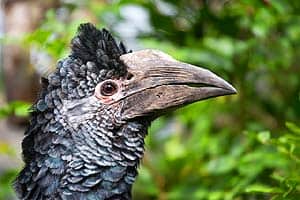 There are both short-legged and long-legged species in this order.
There are both short-legged and long-legged species in this order.- These birds feed predominantly on insects, gathering them from the ground or finding them under the bark with the help of their sharp bills.
- Some of the birds also eat fruit and seeds, playing a crucial role in the tree’s dissemination.
- These birds are usually medium to large, with large heads and prominent eyes.
- Some of the hornbill species are known for unique nesting behavior. The female finds a hole in a tree or a rock, and the male seals the female with eggs in the nest, leaving a small hole for breathing and feeding.
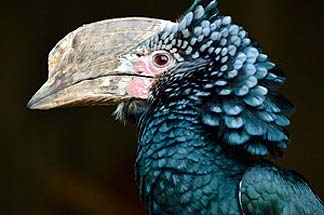 The Buceriotiformes birds usually lay several eggs. The eggs hatch in around 23-42 days and the nesting period lasts about 39-50 days.
The Buceriotiformes birds usually lay several eggs. The eggs hatch in around 23-42 days and the nesting period lasts about 39-50 days.- The chicks can fly immediately after the “seal” on the nest is broken.
- Ground hornbills do not seal their females in nests.
- This bird order also contains hoopoes – birds of more slender build, with longer, thinner bills that feed predominantly on insects in the ground.
- Hoopoes are known to have smelly nests and do not seal their females either.
- These birds are endangered almost everywhere and play a crucial part in their respective ecosystems.
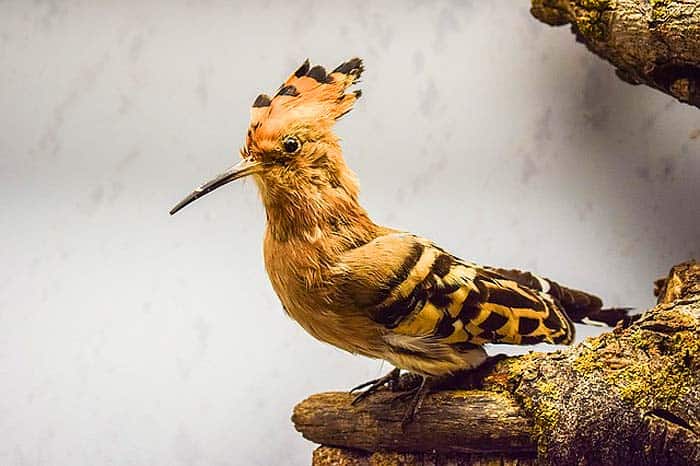
![]()
Bucerotiformes Species
Here are some examples of the birds that belong to this order:
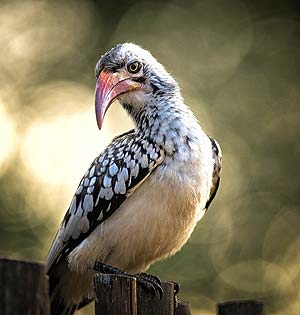
- African Grey Hornbill, Tockus nasutus
- Red-billed hornbill, Tockus erythrorhynchus
- Pied Hornbill, Tockus fasciatus
- Sri Lanka grey hornbill, Ocyceros gingalensis
- African Hoopoe, Upupa Africana
- Eurasian Hoopoe, Upupa epops
- Green-Wood Hoopoer, Phoeniculus purpureus
- Scimitarbill, Rhinopomastus minor
- Trumpeter Hornbill, Bycanistes bucinator
- Southern Ground Hornbill, Bucorvus leadbeateri
![]()
Cite This Page
APA7MLA8Chicago
BioExplorer.net. (2025, May 28). Order Bucerotiformes / Hornbills and Hoopoes. Bio Explorer. https://www.bioexplorer.net/order-bucerotiformes/.
BioExplorer.net. "Order Bucerotiformes / Hornbills and Hoopoes" Bio Explorer, 28 May 2025, https://www.bioexplorer.net/order-bucerotiformes/.
BioExplorer.net. "Order Bucerotiformes / Hornbills and Hoopoes" Bio Explorer, May 28 2025. https://www.bioexplorer.net/order-bucerotiformes/.











